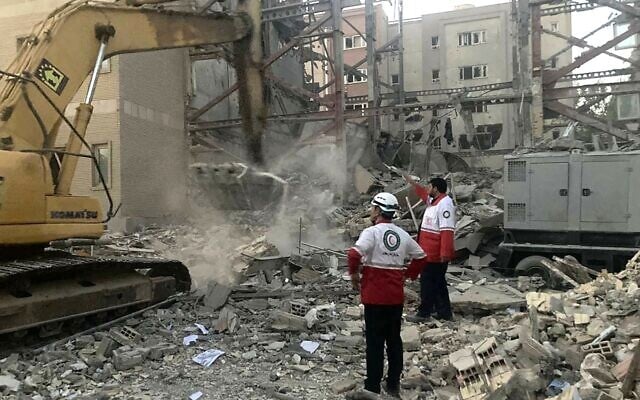



Mossad chief David Barnea said that Israel inflicted “significant damage” on Iran in last month’s 12-day operation, but indicated that Jerusalem needs to continue its operations against the Islamic Republic, in comments released by the Prime Minister’s Office on Thursday.
“We are committed to continuing to act resolutely to prevent a future threat from Iran to Israel and to strive to maximize the strategic opportunities before us,” Barnea said during a visit by Prime Minister Benjamin Netanyahu to Mossad headquarters on Wednesday night.
Netanyahu told the Mossad leadership that its beeper and walkie-talkie operation against Hezbollah in September 2024 “set in motion everything that happened later — the elimination of [Hezbollah leader Hassan] Nasrallah, the collapse of [Syrian President Bashar] Assad, and subsequently our joint operation to remove the immediate existential threat” in Iran, the PMO said.
Israel launched an unprecedented air campaign targeting Iranian nuclear sites, scientists, and top military brass on June 13 in a bid to end the country’s nuclear program, which Tehran says is for civilian purposes but Washington and other powers insist is aimed at acquiring atomic weapons.
American B-2 bombers also hit two Iranian nuclear sites with massive GBU-57 bunker-buster bombs last month, while a guided missile submarine struck one of those sites and a third site with Tomahawk cruise missiles.
US President Donald Trump had spent weeks pursuing a diplomatic path to replace the nuclear deal with Tehran that he tore up during his first term in 2018, but he ultimately decided to take military action.
The Pentagon said Wednesday that Iran’s atomic program was set back by up to two years, and according to Iranian Foreign Minister Abbas Araghchi, the strikes on the Fordo nuclear site caused severe damage.
Araghchi said in a post on X on Thursday that Tehran remains committed to the nuclear Non-Proliferation Treaty and its safeguards agreement, shortly after President Masoud Pezeshkian formally suspended cooperation with the International Atomic Energy Agency in response to the strikes.
“Our cooperation with the IAEA will be channeled through Iran’s Supreme National Security Council for obvious safety and security reasons,” Araghchi added.
Iranian officials have sharply criticized the IAEA, the UN’s nuclear watchdog, for what they described as the agency’s “silence” in the face of the Israeli and US strikes on Iranian nuclear sites.
Over the weekend, the head of the agency, Rafael Grossi, said that Iran could be producing enriched uranium in a few months, raising doubts about how effective US strikes to destroy Tehran’s nuclear program have been.
Meanwhile, US CENTCOM chief Gen. Michael Kurilla visited Israel Wednesday as the official guest of IDF Chief of Staff Lt. Gen. Eyal Zamir, the military said Thursday.
During the visit, Kurilla joined Zamir and senior Israeli commanders for a joint panel discussion on the IDF’s recent achievements in Operation Rising Lion against Iran and broader regional security developments.
Kurilla also toured the Israeli Air Force’s underground command center alongside IAF chief Maj. Gen. Tomer Bar.
The IDF said it places great importance on its ties with the US military and thanked CENTCOM for its strategic coordination during recent operations.
Iran’s semi-official Mehr news agency published on Thursday footage from an Israeli strike on Quds Square in Tehran during the war.
Several people can be seen milling about in the moments before the strike, and cars are driving down the road.
Then, two huge explosions detonate one right after the other, the force of which sends a number of parked cars flying into the air.
Car parts rain down as the camera’s view becomes partially obscured by smoke, and the video cuts off.
Iran retaliated to Israel’s strikes by launching over 500 ballistic missiles and around 1,100 drones at Israel.
The attacks killed 28 people and wounded over 3,000 in Israel, according to health officials and hospitals.
In all, there were 36 missile impacts and one drone strike in populated areas, causing damage to 2,305 homes in 240 buildings, along with two universities and a hospital, and leaving over 13,000 Israelis displaced.


